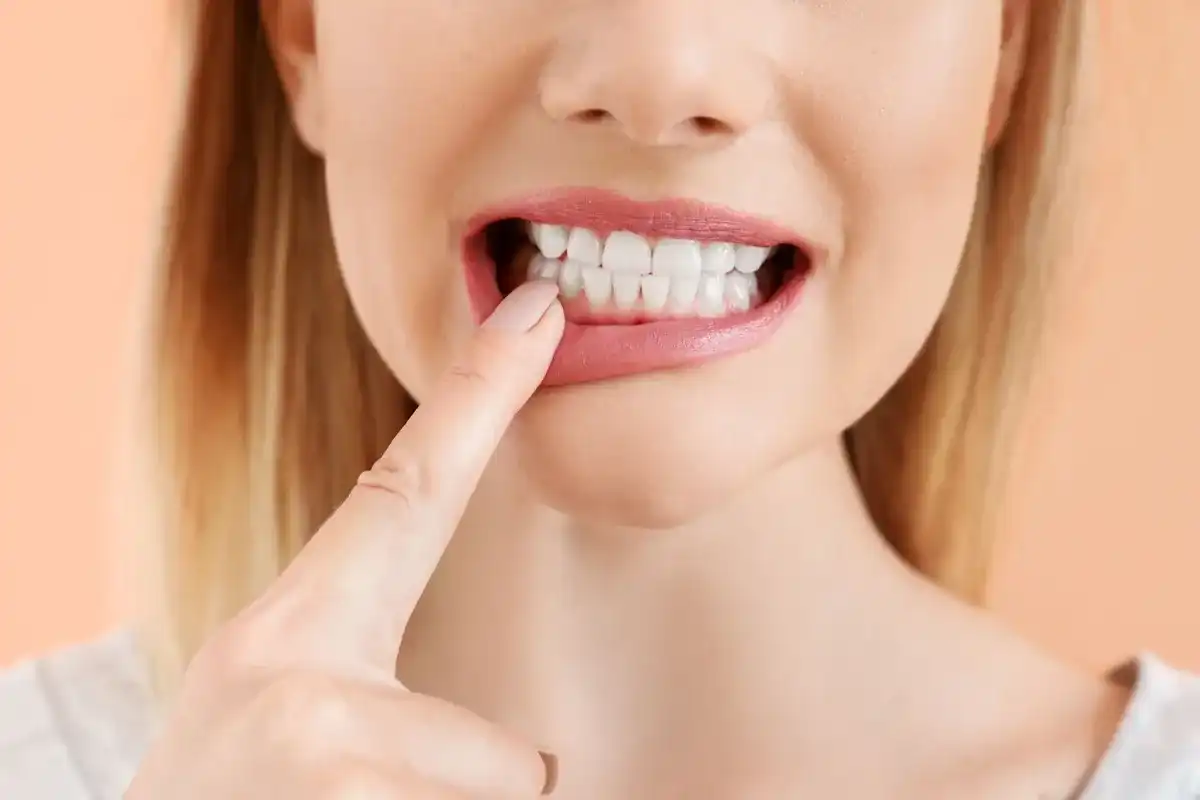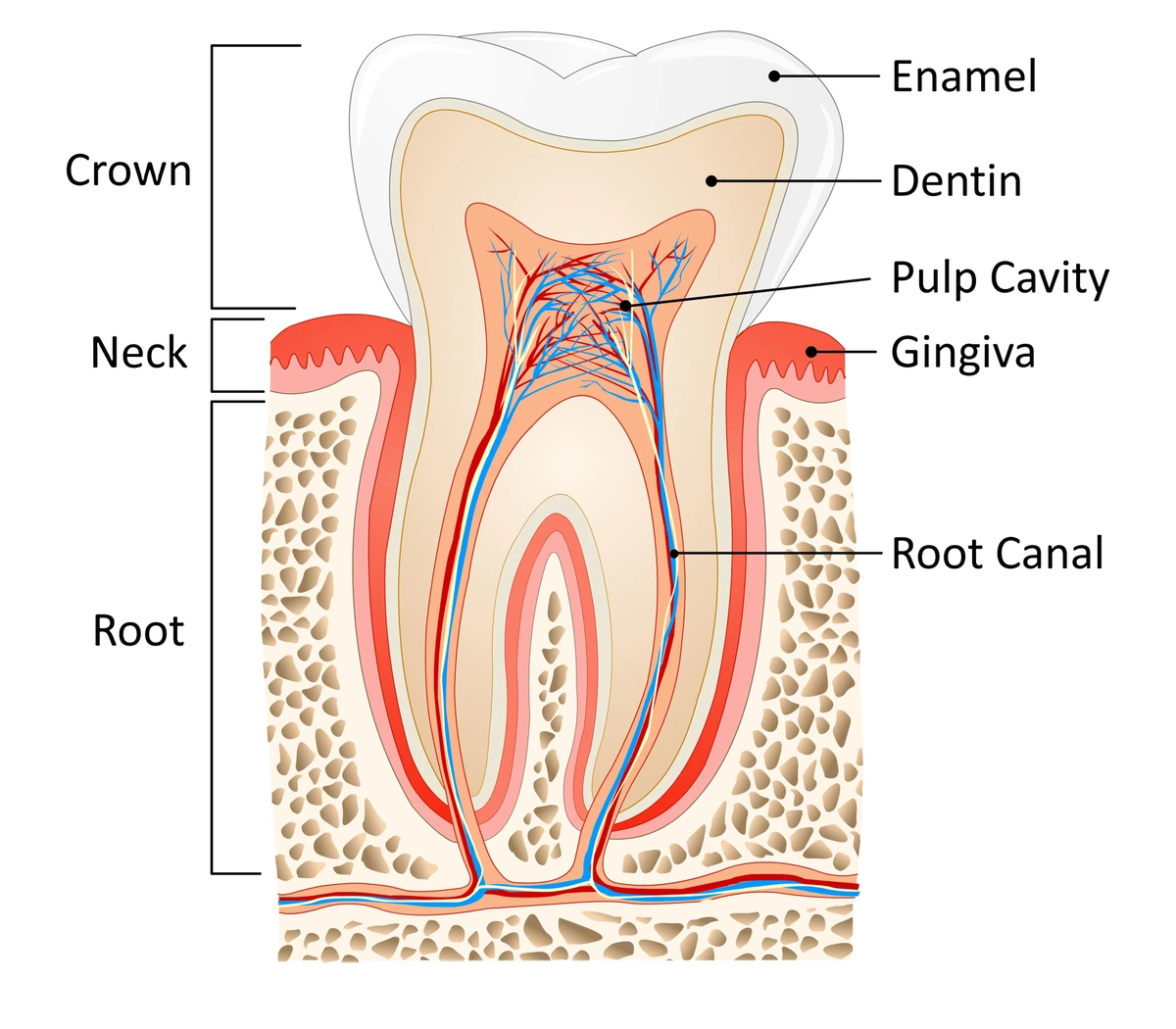Tooth Enamel: Loss, Erosion, and Prevention


Tooth enamel is the hardest, densest, and strongest substance in the entire human body. Yes, it’s even stronger than bones. As morbid as it sounds, that’s one reason why they use teeth for forensic purposes when it comes to hunting down criminals and solving cold cases. Anyway, the point is that our teeth are really unique because of how strong our enamel is.
But unfortunately, tooth enamel isn’t completely indestructible. I mean, that’s how we get tooth decay. When tooth enamel erosion comes into play, enamel loss can develop cavities, which can lead to pain and eventually tooth loss. Knowing what causes tooth enamel erosion can help you prevent dental problems before they start.

What Is Tooth Enamel?
If you were to take a tooth and section it in half so that you could see inside of it, you would notice a thick, dense layer of white that covers the crown (the part of your tooth that’s visible in your mouth) and tapers off just above the root. This layer is called enamel. And then underneath your tooth enamel, you have dentin, which is more of yellow color and less dense. Dentin makes up the bulk of your tooth structure. Inside of the dentin is the pulp or nerve of your tooth.
The density of the minerals protects your tooth from sensitivity, acids, bacteria, and makes your teeth strong enough to wear against each other day after day after day every time you eat. So, if something happens to your enamel, such as tooth erosion, the overall tooth can quickly become affected.
What Does Tooth Enamel Do?
Tooth enamel protects our teeth. It's our body’s way of protecting our teeth from tooth erosion or wear with everyday use. It has to be strong, because each time you bite into food, your teeth come into contact with one another. Then, there’s the grinding that your back molars do to break down the food you’re eating before it makes its way into your digestive system.
You’ll notice that the tooth enamel in your mouth is shaped differently depending on which tooth you’re looking at. The enamel on your front teeth is made for cutting. Move slightly further back to your canines (cuspids) and those pointed “eye teeth” are more for tearing or ripping. Just behind those, you have your bicuspids or premolars and then the very back teeth called molars, all of which are for grinding and breaking up food. Since the tooth enamel in the back is flatter with smaller cusps, it’s easier for really grinding up everything so that your digestive system can soak up all of the nutrients that your body needs to stay healthy.
What Causes Tooth Enamel Erosion?
Tooth enamel erosion can be due to various factors, but ultimately, it’s due to acid exposure. When there’s a low pH level inside of your mouth, the acid will gradually etch away at the tooth until it starts to erode.
For example, if someone has long-term heartburn or acid reflux disease (GERD) the stomach acids can flush up into the mouth and lead to long-term tooth erosion, even if you can’t taste or tell that it’s happening. If you regularly consume highly acidic foods, may notice signs of enamel erosion after several months.
Does Plaque Cause Enamel Erosion?
The plaque biofilm that accumulates across tooth enamel can also harbor acidic bacteria, leading to long-term acid exposure on teeth. If you don’t brush well or often enough, plaque will sit on the tooth for a longer amount of time and thus increase your chances of tooth erosion throughout those areas of buildup.
Even if you think you’re not eating foods that are bad for your teeth, the saliva and bacteria already inside of your mouth will break up food particles to create plaque. When it does, acid byproducts (aka germ poop) begin the tooth enamel erosion process as they start etching away at your enamel causing tooth decay.
Signs Of Tooth Enamel Erosion
Depending on the cause of your tooth erosion, you might notice one of these three common signs:
1) Frosty White Appearance
When plaque sits on teeth for too long, it etches the outer layers of tooth enamel in a process that we call “demineralization” (aka the first phase of cavity formation.) These areas tend to look whiter or frosty than the enamel next to it.
2) Smooth, Glassy Surface
Sucking on lemons or having an acidic diet will cause the outer surface of the enamel to start eroding in a way that leaves an ultra-smooth surface that typically looks shinier than healthy enamel.
3) Shallowed Out Divots In Your Tooth Cusps
You know how you have all of those bumpy areas on your back teeth? Those are your cusps. But when someone has acid reflux disease, it’s really common to see tooth enamel erosion present itself as tiny hollowed out areas on the tip of those cusps!
You might even start to experience tooth sensitivity if your tooth enamel gets too thin since the dentin layer underneath it isn’t meant to be exposed to the external environment.
Can Tooth Enamel Grow Back?
Unfortunately, enamel does not grow back. It’s not possible to get eroded enamel (or areas where you have cavities) to grow back. Once the damage is done, it’s done. The only way to fill in that structural flaw or hole is to place bonding or a filling in the tooth.
But… (there’s always a but, right?) …if you catch tooth erosion as early as possible, as in the first stages of demineralization, it’s possible to get your tooth to remineralize. The tooth enamel might not ever look the same, but at least you won’t have a cavity.
Can I Prevent Tooth Enamel Loss
The entire purpose of having great oral hygiene, getting fluoride, drinking lots of water, and eating a balanced diet is to help prevent enamel loss and tooth decay. Just like your bones, tooth enamel needs certain minerals and vitamins to stay healthy. So, your dentist or dental hygienist might recommend supplementing with stronger fluoride from time to time, especially if they’re starting to see erosion.
If you have a habit like sucking on lemons, eat a lot of acidic foods, or even if you have acid reflux disease, now is the time to take steps to prevent enamel loss. Make dietary changes, speak with your physician, and then ask your dentist what extra treatments they can give you to prevent unwanted dental damage.
Overcoming Tooth Enamel Loss
Tooth enamel is hard, but it’s not indestructible. You still need to keep your teeth clean and manage how much acid they’re exposed to if you want to avoid tooth enamel erosion. Keep a lookout for any white frosty or smooth shiny areas, as well as divots in your back teeth.
Communicating with your dentist and hygienist by scheduling routine checkups and cleanings can help you prevent damage to your tooth enamel so that you can enjoy healthier teeth for the rest of your life.

Make your inbox smile!
Subscribe






